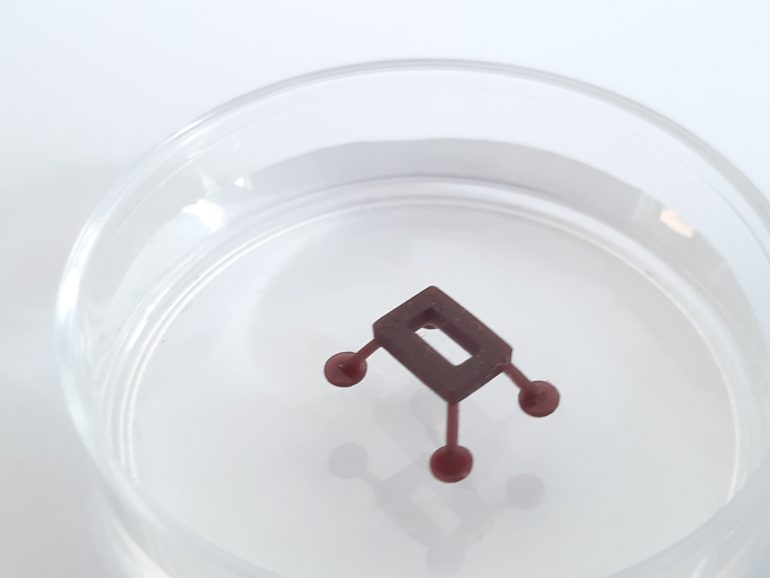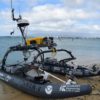This research project was originated from the collaboration between two institutions with their respective expertise: The TIPs laboratory of the ULB, in Belgium, which is a group dedicated to the study of transport phenomena and fluid interfaces, and the AS2M department of the FEMTO-ST institute, in France, specialized in microrobotics. And thus, ThermoBot was born, a new kind of manipulation platform working on the air-water interface. ThermoBot uses an original actuation mechanism, an infrared laser that locally heats the air-water interface, triggering so-called thermocapillary flows. Combining our specialties in interfacial phenomena and robotics, we were able to use this flow to displace floating components in a controlled manner.
The current technological trend is towards miniaturization. This is evident in the electronics industry, with electronics components getting smaller by the day. Miniaturization of products requires the development new techniques to handle and assemble small, sometimes fragile, components. This field is called micro-assembly, combining applied physics and control engineering.
There are two main medias in which handle small parts: in air or in liquids. Air environment seems more intuitive, but it has some drawbacks, mainly due to uncontrolled adhesion. On the other hand, micromanipulation in liquids is more favorable towards handling biological material and adhesion forces are highly reduced, but the viscous drag limits the manipulation velocity in liquids.
In our case, we decided to work at the interface between water and air, a media little explored by robotics. Beside larger velocities compared to the water bulk, working at the air-water interface also allows us to exploit interfacial phenomena to generate the forces which create the motions.
We have shown the versatility of ThermoBot as a manipulation platform (displacing up to four objects simultaneously, position and orientation control, path following) and how it can be used to assist the self-assembly of particles, paving the way towards micromanufacturing at the air-water interface.
While working at the interface has several advantages as the ones described above, it also limits the manipulations to 2D movements. Moreover, ThermoBot requires pure water to work, which limits its applications (for example, it could not be used to manipulate biological material). Finally, while the developed setup could, in theory, be used to manipulate micrometer size particles, this has not been proven in the manuscript, some unforeseen obstacles may stand in the way towards the miniaturization of ThermoBot.
This work nicely combines physics (capillarity) and engineering (robotics). It has been made possible by a long-standing international collaboration between Pierre Lambert at ULB and Aude Bolopion and Michaël Gauthier at FEMTO-ST. Thanks to this dual approach, we could carry a broad study of the phenomena: from the study and model of the flow itself to the development of the control algorithms, which fitted well with Franco Piñan Basualdo’s interest in fluid mechanics and control.
The natural perspective is now to solidarize the assembly components with one another. Another difficulty might be the pollution of the surface, particularly by some big molecules called surfactants that can seriously reduce the efficiency of our approach. Franco Piñan Basualdo is currently working on the quantification of these side-effects.
Up to now, we just demonstrate some proofs-of-concept for assembling and moving miniaturized objects or robots on water. This could enable new manufacturing processes (for instance for microfactories), or open perspectives for autonomous floating robots.
Nanoparticle jamming at the water-oil interface
More information:
Franco N. Piñan Basualdo et al. A microrobotic platform actuated by thermocapillary flows for manipulation at the air-water interface, Science Robotics (2021). DOI: 10.1126/scirobotics.abd3557
Provided by
Université libre de Bruxelles
Citation:
ThermoBots: Microrobots on the water (2021, April 1)
retrieved 2 April 2021
from https://techxplore.com/news/2021-04-thermobots-microrobots.html
This document is subject to copyright. Apart from any fair dealing for the purpose of private study or research, no
part may be reproduced without the written permission. The content is provided for information purposes only.



